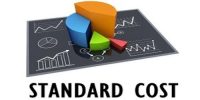Integrated Accounting System
Integral or Integrated system is a System of accounting under which only one set of account books is maintained to record both the Cost and Financial transactions. The system implies the merger of both cost and financial accou.nts in one set of books. This system is particularly helpful for companies that make job costs part of commission formulas.
The two sets of account books merge into a composite system. CIMA, London defines an integral system as a system in which the financial and cost accounts are interlocked to ensure that all relevant expenditure is absorbed into the Cost-accounts. This system often includes accounts payable, receivable, fixed assets and inventory management; all linked to each other and to the general ledger.
The advantages of an integrated system are as follows:
(i) There is no need for reconciliation because there will be only one figure of profit or loss as there is only one set of books.
(ii) This system is economical because it avoids duplication of recording the transactions in two separate set of books.
(iii) Accounting information is readily available and the correctness of the data is automatically checked.
(iv) It enables the introduction of mechanized accounting.
(v) A better understanding exists among the staff.
(vi) This accounting system ensures the ascertainment of marginal cost, variances, abnormal loss and gains.
(vii) Costing information is generated from the books of original entry. It avoids delay in obtaining information.
(viii) It saves the clerical work because only one set of account is needed to keep the records.
















